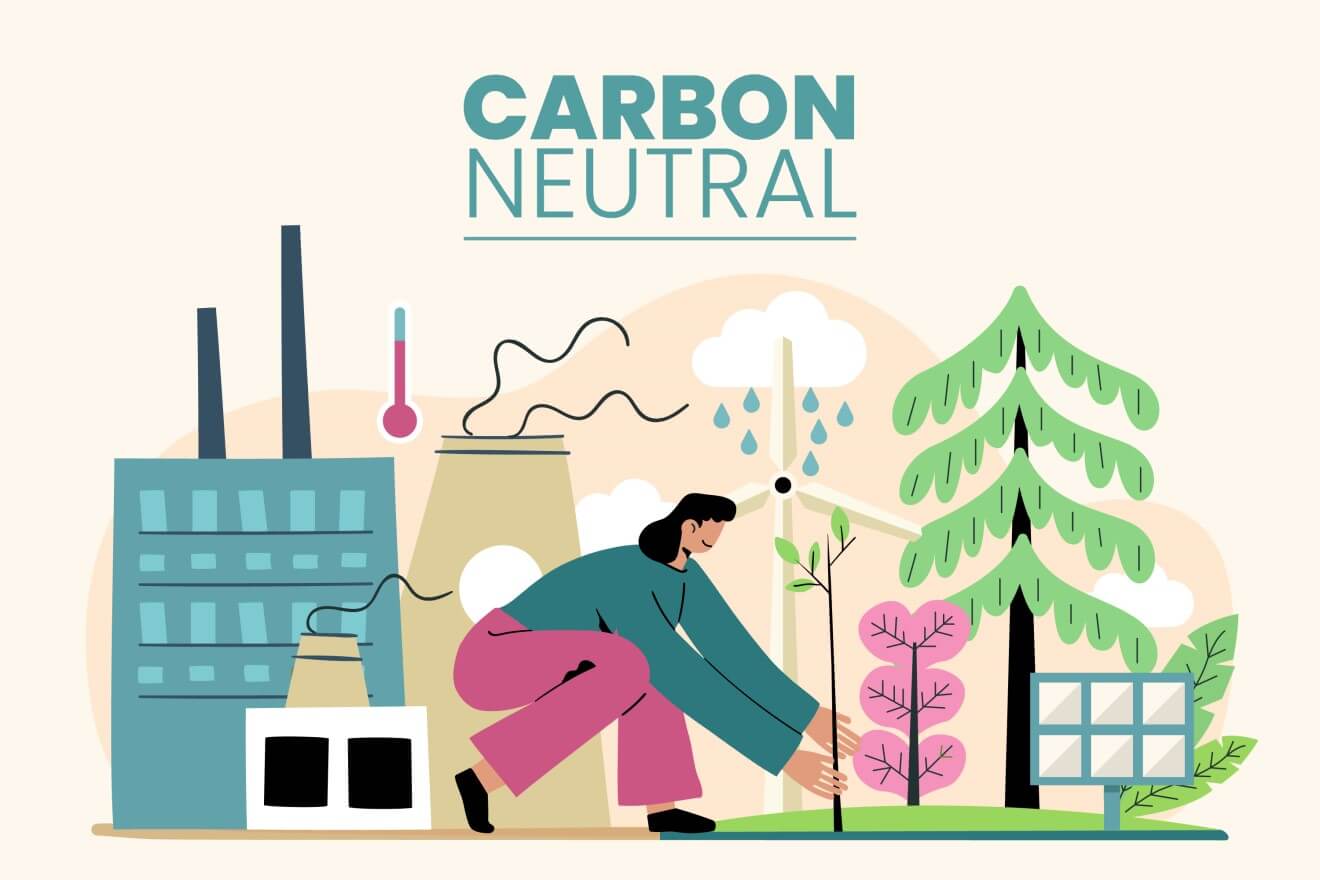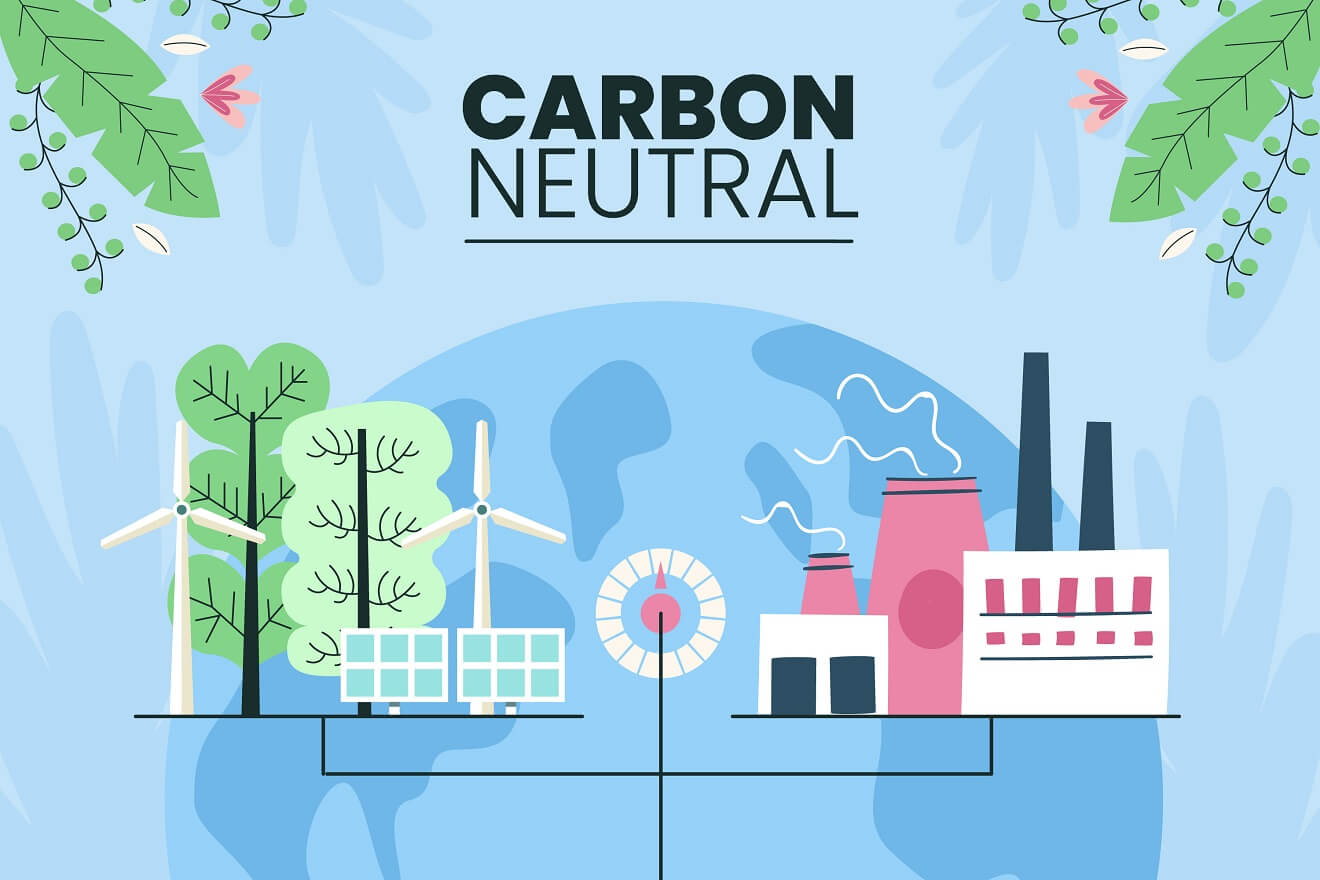Carbon Neutrality Explained
Importance of Carbon Neutrality
Achieving Carbon Neutrality
Attain Carbon Neutrality with Water Filters
Conclusion
With the increasing demand for sustainable climate action came some new buzzwords.
Carbon
Neutrality is one of the terms you will find around where climate action is the topic of discussion.
Understandably, not everyone understands what these terms really mean. We use them
as frequently as it gets, but do we know if we are using them correctly? Read on to learn more about these terms
and how they contribute to the fight against climate change and the quest to save the planet.
Carbon Neutrality Explained
Carbon neutrality is used to describe energy saving and emission reduction. It is
the total amount of carbon dioxide or greenhouse gas emissions an entity produces to offset the carbon dioxide
or greenhouse gas generated by itself over time. Entity here includes an individual, an activity, a product, an
enterprise, and even a country.
The emissions are produced directly or indirectly through afforestation, energy
saving, emission reduction, and others.
Importance of Carbon Neutrality
We are all out to stop
global warming and protect our planet.
One of the most
effective ways of achieving this is to work towards carbon neutrality. It also doubles as an essential support
system to sustain human development in the long run.
The effects of
carbon dioxide and other greenhouse gases on our
ecological
environment are already visible. The sea level is rising, and the increased temperature that comes with the
intense heat serves as the kinetic energy the air and ocean need to become destructive. That is why we see more
cases of natural disasters like tsunamis, hurricanes, typhoons, and others on large scales.
Except we win the fight against warming, we may be in for longer epidemic seasons
of infectious diseases. What was prevalent in autumn and summer may now last all year. We may also see the
transition of tropical and subtropic parasitic, insect-borne, and intestinal infectious diseases to cold and
temperate regions.
With carbon neutrality, we can ensure a complete change of our extensive production
and lifestyle to a more refined setting. While there has been a shift from the high-carbon development model to
the “low carbon and green” alternatives due to economic development, our society can leverage new and innovative
technology to become even more resource-saving and environment-conscious.
Achieving Carbon Neutrality
Do you ever wonder what you can do to attain carbon neutrality? Everyone can and
must do something, no matter how little it may seem. Subtle but intentional changes to our way of life can
tackle the climate crisis more effectively than we think.
Minimize Driving.
Cars burning diesel or gasoline are all over our roads, leading to congestion in
most cases. If we walk and cycle more, we can reduce the greenhouse gas we produce. Trains and buses are better
alternatives for long-distance journeys. Carpool is another top consideration.
Review Your Travel Style.
We can reduce environmental impact by flying less. Fossil fuels power airplanes.
The less we use them, the better for our environment. Consider online meetings over physical meetings or take a
train where possible.
Embrace Recycling.
Most items, including clothing, electronics, and others, are significant
contributors to carbon emissions. From raw material extraction to manufacturing and logistics, the production
process of these materials harms the environment. Buying less of these materials and repairing/recycling as
applicable will protect our climate.
Consider Electric Cars.
Electric cars are becoming increasingly popular and cheaper. Although we burn
fossil fuels to produce the electricity that powers these cars, we are avoiding air pollution by reducing the
amount of greenhouse gases otherwise produced by vehicles running on gasoline and diesel.
Use Less Energy at Home.
Coal, oil, and natural gas are the major sources of heat and electricity we use at
home. Reducing personal heating and cooling can help save energy. Adopting LED light bulbs and other
energy-efficient appliances will also help, as will using natural air to dry clothes and cold water for laundry.
Minimize Plastic Use.
Plastics are derived from fossil fuels. Currently, the plastic industry is
responsible for 6% of global oil consumption, and this is expected to rise to 20% by 2050. The energy-intensive
extraction of plastics from petroleum produces considerable amounts of greenhouse gases. Installing a water
purification at home would be a great choice, check here to learn more about
Bottled
Water vs. Reverse Osmosis
System.
Attain Carbon Neutrality with Water Filters
Bottled
water is more prominent than ever because it is believed to be cleaner and
safer. But we can get clean and healthy water from a water purification system while reducing the use of plastic
bottles.
You’re mistaken if you think throwing your plastic in the recycling bin solves the
problem. You will be surprised to learn that only 9% of plastic waste is recycled globally. Where does the
remaining go? Right into our environment – air and water, where they produce greenhouse gas due to exposure to
solar radiation.
The ocean welcomes plastic waste as much as a garbage truck every minute. Yes, it
is that terrible. The organisms in the water bodies break down these marine litter pollutants into
microplastics, directly contributing to the emission of greenhouse gases. Other negative impacts of these
microplastics on marine microbes also contribute indirectly to the emission. For example, plankton can take away
up to 35% of carbon dioxide emissions generated by human activities. But they lose this absorptive capability
once they ingest
microplastics.
Another source of greenhouse gas we need to pay attention to is the open burning of
waste. This method of waste disposal produces black carbon causing air pollution and visible smog. Black carbon
is 5,000 times more likely to cause global warming than carbon dioxide.
Conclusion
The battle to snatch our planet from the claws of global warming is everyone’s to
fight. The first step is understanding the problem and how we contribute to it. Then we can look into our daily
lives and make simple but crucial adjustments to reduce our carbon footprint and limit the amount of greenhouse
gases we produce.


























































































































